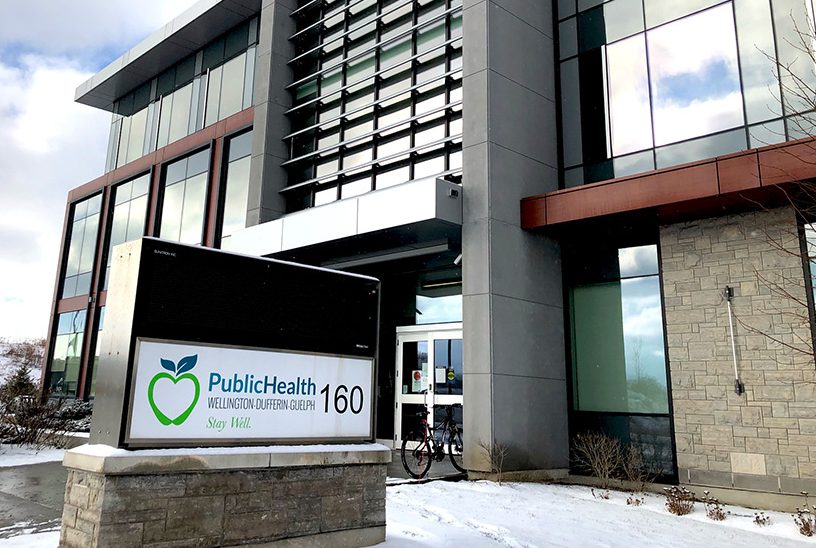GUELPH – In the absence of PCR tests and therefore accurate case counts, Wellington-Dufferin-Guelph Public Health (WDGPH) is trying to figure out how to know when we’re on the other side of this Omicron wave.
Associate medical officer of health Dr. Matthew Tenenbaum told the board of health at its Feb. 2 meeting that WDGPH had been using case count data to track the spread of COVID-19 and he showed graphs that clearly indicate the peaks and valleys of the four previous waves.
Omicron came on the scene in December and its onset can be seen on the graph as well – an almost vertical jump to the highest number of cases this pandemic has witnessed.
But the province also announced at the end of December that it is reducing PCR testing, “so we don’t have case counts,” Tenenbaum said.

DR. MATTHEW TENENBAUM
“The numbers are coming down, but people may not be counted who have it.”
Tenenbaum said the surveillance team has been looking at modelling, test positivity rates, hospital system data, and wastewater surveillance to help it figure out Omicron’s prevalence in the community.
This data has generally mirrored case counts throughout the pandemic and each measure is indicating that Omicron peaked around Jan. 11 and is now on a slow decline.
However, “We’re not through this yet,” Tenenbaum cautioned.
“There is still a high burden on healthcare workers, but there are signs that it is stabilizing.”
There are still many unknowns that could change the downward trend, he said, including the impact of relaxing restrictions, new variants, and pandemic fatigue – where people are less willing to abide by public health measures.
Medical Officer of Health Dr. Nicola Mercer said the vaccine is still the best defence against becoming ill and it reduces the severity of symptoms.
Vaccinated people are less likely than unvaccinated to be hospitalized – six times less as of Feb. 3 – and less likely to die from COVID-19.
Mercer said the virus is spread through short range respiratory particles that leave an infected person and are inhaled by someone else.
That is why chatting with a colleague over coffee at work is now high-risk behaviour and why distancing and mask-wearing orders are in place.

DR. NICOLA MERCER (Advertiser file photo)
On the mask order, Mercer said her Section 22 mask mandate issued in June 2020 still stands, as does the provincial order.
“We still need it,” she said in answer to a question from a board member.
“It still makes sense to protect ourselves. I can see a time when the province will lift theirs. When [that happens] I will contemplate whether it still makes sense here.”
Mercer said two doses of the vaccine afforded good protection against the Delta variant, but with Omicron being so contagious, a booster is recommended for those over age 18.
She said in the WDGPH region 85 per cent of all residents aged 5 and up have had two doses of the vaccine and 57.5% of those over 18 have had three doses. Those under 18 are not eligible for a booster at this time.
For the 70 and over age group, 90.6% have had three shots, placing this region third highest in the province. And 25.1% of children aged five to 11 have had two shots, also a third-place ranking in Ontario.
Public health is now offering drop-in vaccinations for those wanting a first, second or third dose. Many pharmacies and doctors’ offices are also giving the shot.
Visit www.wdgpublichealth.ca/drop-ins for more information.




